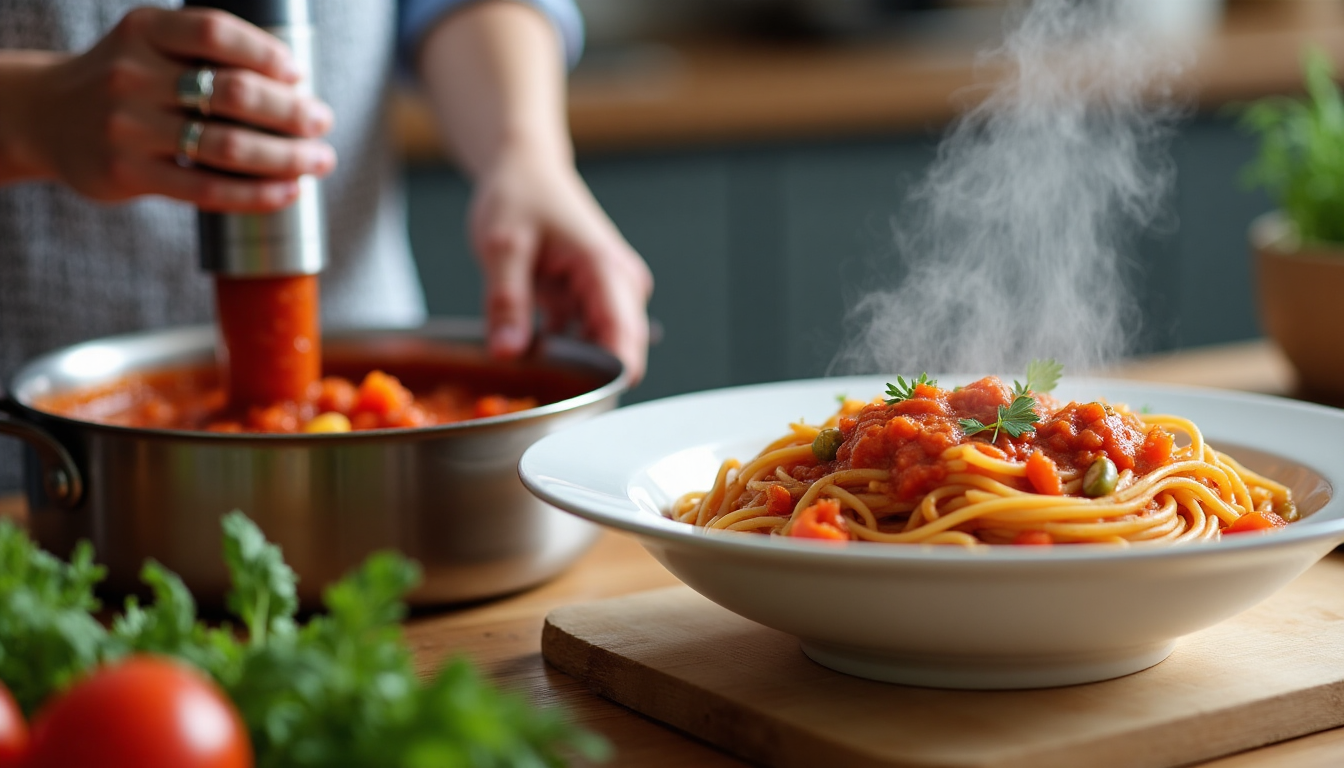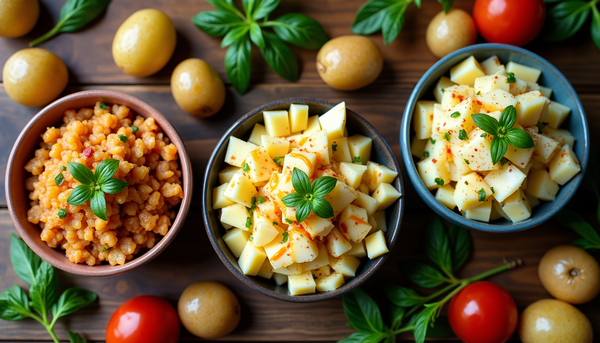The Sneaky Parent's Guide to Vegetable Victory

The Sneaky Parent's Guide to Vegetable Victory
Let's be honest here. I'm totally that mom who hides vegetables in everything.
Before you judge me, hear me out. Last Tuesday, my 8-year-old devoured two bowls of pasta with what he called "the best marinara ever" while my 5-year-old asked for seconds. What they didn't know? That sauce was packed with carrots, bell peppers, zucchini, and white beans.
Am I proud of my deception? Absolutely.
Why "Sneaky" Isn't Really Sneaky
Here's the thing about hiding vegetables in food—it's not actually about tricking anyone. It's about creating delicious meals that happen to be incredibly nutritious. When my kids say they love something, they're not lying just because they don't know every ingredient. They genuinely love it because it tastes amazing.
I've been experimenting with what I call "invisible nutrition" for three years now, ever since my youngest went through that phase where anything green was basically poison. (We're mostly past that now, thankfully.) What I've discovered is that when vegetables are properly integrated into familiar flavors, they don't just disappear—they actually make everything taste better.
Think about it. Have you ever had a truly great marinara sauce? The depth of flavor, that rich complexity that makes you go "mmm" with the first bite? That's not just tomatoes working their magic. Traditional Italian cooking has always included soffritto—a base of finely diced vegetables that melt into sauces and provide incredible depth.
What we're doing isn't revolutionary. It's just... strategic.
The Science of Seamless Integration
There's actual food science behind why this works so well. When you sauté vegetables until they're tender and then blend them into a smooth sauce, you're breaking down cell walls and releasing natural sugars. Carrots add sweetness that balances tomato acidity. Bell peppers contribute a subtle earthiness. Zucchini brings moisture and helps create that velvety texture we all crave in pasta sauce.
And those white beans? Pure genius. They add protein (hello, balanced meal!) and create this incredible creaminess without any dairy. My kids are getting fiber, plant-based protein, and a rainbow of vitamins, but all they taste is "really good pasta sauce."
I've served this to friends who don't have kids, and they always ask for the recipe. Not because it's a "kid-friendly" version of marinara, but because it's genuinely superior to most jarred sauces and even some from-scratch recipes that don't have this vegetable foundation.
Breaking Down the Magic Formula
The key to invisible vegetables is understanding which ones work where. For marinara, I stick to vegetables that either complement tomato flavors or essentially disappear:
Carrots are my secret weapon. They're naturally sweet, they break down beautifully when cooked, and they add this gorgeous color that just makes the sauce look more vibrant. I dice them small and let them get nice and soft during the sauté process.
Red bell peppers are basically tomatoes' best friend. Similar flavor profile, similar color—they blend in seamlessly while adding vitamins and natural sweetness. Sometimes I use orange or yellow peppers if that's what I have on hand. Works just as well.
Zucchini might seem like a weird choice, but it's practically flavorless when cooked and blended. What it does provide is bulk, moisture, and nutrients without changing the taste at all. It's like adding vitamins that taste like nothing.
White beans were a game-changer discovery. Great Northern, cannellini, navy beans—they all work. They add protein and fiber, but more importantly, they create this rich, creamy texture that makes the sauce feel more substantial and satisfying.
The whole tomato paste situation is crucial too. I use a full 6-ounce can because when you're adding all these vegetables, you need that concentrated tomato flavor to anchor everything. It's what makes this taste like marinara instead of vegetable soup.
Customization is Your Friend
Once you master the basic formula, this becomes incredibly versatile. I've made versions with:
- Butternut squash instead of carrots (amazing in fall)
- Cauliflower for extra bulk without flavor change
- Spinach thrown in during the last few minutes of sautéing
- Sweet potatoes for a slightly different sweetness profile
- Mushrooms for umami depth (though some kids can spot mushroom pieces, so dice them tiny)
The beauty is that you can adapt based on what's in your fridge or what's on sale. Got some sad-looking vegetables that need to be used up? Probably perfect for marinara.
I've also learned that roasting the vegetables first instead of sautéing them adds this incredible caramelized flavor. Takes a bit longer, but if I'm meal-prepping on Sunday, I'll often go this route. Just toss everything on a sheet pan, roast at 425°F until tender, then proceed with the blending.
Beyond Pasta Night
This sauce has become my go-to base for so many meals. We use it for:
- Lasagna (obviously)
- Pizza sauce (thin it with a little water or broth)
- Chicken parmesan base
- Vegetable soup starter (just add broth and more vegetables)
- Shakshuka (works surprisingly well)
- Dipping sauce for mozzarella sticks or garlic bread
I make double batches every time and freeze half in freezer bags. Having homemade, vegetable-packed marinara ready to go has saved me from so many takeout nights.
The Bigger Picture
What I love most about this approach is that it's expanding my kids' palates without them even realizing it. They're getting used to more complex flavors, more diverse nutrients, and they're building positive associations with foods that are really good for them.
My oldest has actually started requesting "the homemade sauce" instead of the jarred stuff we used to buy. He can taste the difference—he just doesn't know why it's different. And honestly? That's perfectly fine with me.
I'm not trying to trick my kids forever. But I am trying to feed them well while they're developing their food preferences. If that means being strategic about how I prepare familiar foods, then I'm absolutely going to do that.
Let's Talk Texture
One thing that can make or break this recipe is the blending. If you have a high-speed blender (like a Vitamix), you're golden. Everything will be completely smooth. If you're working with a regular blender, you might need to blend in batches and maybe accept that it won't be quite as silky.
Honestly? My kids don't care if there are tiny vegetable specks. As long as there aren't obvious chunks of Things They Don't Like, they're happy. Sometimes I actually prefer a slightly less smooth texture because it feels more rustic and homemade.
If your sauce seems too thick after blending, pasta water is your friend. That starchy water helps the sauce cling to noodles and creates the perfect consistency. I always save at least a cup of pasta water now—it's become automatic.
Failure Stories (Because They Happen)
Not every experiment works. I once tried to add broccoli to this sauce. Terrible idea. It turned everything slightly gray-green and added a sulfur flavor that no amount of tomato paste could cover.
Sweet potatoes work, but you have to be careful with the quantity or the sauce becomes too dessert-like. Learned that one the hard way.
And frozen vegetables? Skip them. The texture gets weird and watery when you blend them. Fresh vegetables that you cook yourself are really the way to go here.
The Honest Truth About Picky Eating
Look, I know some people think hiding vegetables is avoiding the "real" problem of picky eating. Maybe they have a point. But you know what? My kids are eating vegetables. They're enjoying their dinner. Nobody's crying at the table.
Some battles are worth fighting. Some aren't. I choose to fight about screen time and bedtime routines. I choose not to fight about whether they can see the vegetables in their pasta sauce.
And here's what's actually happening: they're developing a taste for foods that are good for them. They're learning that healthy foods can be delicious. They're building positive food memories around family dinners.
That seems like a pretty good outcome to me.
Your Turn to Experiment
What I want you to try is this: make the basic recipe exactly as written first. See how it goes over with your family. Notice the texture, the flavor, how it works with different pasta shapes.
Then start experimenting. What vegetables do you need to use up? What does your family actually enjoy eating? How can you adapt this formula to work with your specific situation?
The goal isn't to follow someone else's recipe forever. It's to understand the principles so you can create your own solutions.
And if your kids figure out what you're doing? That's actually a good thing. It means you can start talking about why vegetables matter and how good food can taste amazing when it's prepared thoughtfully.
Who knows—you might end up with kids who actually ask for vegetables in their sauce.
Stranger things have happened. Trust me on this one.
What vegetables are you planning to sneak into your next batch of marinara? I'd love to hear about your experiments in the comments below.




